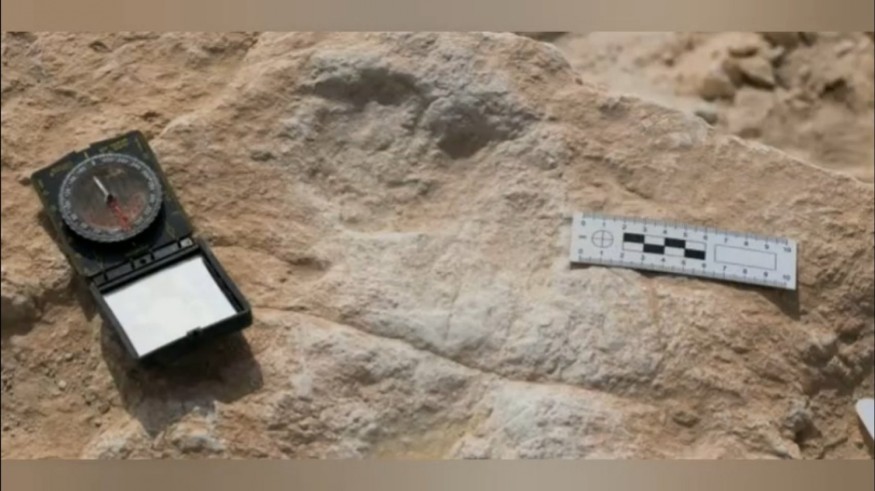Researchers have discovered human footprints in the Nefud Desert, which sheds new light on the routes that ancient humans took as they spread from Africa.
One hundred twenty thousand years ago, in now Saudi Arabia, a small group of humans stopped to drink and forage at a lake where other animals like camels, buffalos, and elephants used to frequent. They have hunted the large animals but did not stay for long and used the watering hole as a waypoint for a longer journey.
This new study is published in Science Advances on Thursday, September 17.

Ancient Human Footprints Found in Saudi Arabia
The Arabian Peninsula is now a vast arid desert that has become inhospitable to any living thing that comes across it, unlike the past years as what research in the last decade has revealed. During the last interglacial, they have experienced much greener and more humid conditions because of the natural climate variation.
Richard Clark-Wilson of the Royal Holloway, co-author of the study, said that "At certain times in the past, the deserts that dominate the interior of the peninsula transformed into expansive grasslands with permanent freshwater lakes and rivers."
Moreover, study first author Matthew Stewart of the Max Planck Institute for Chemical Ecology in Germany said that the footprints they found were discovered while he was doing fieldwork for his Ph.D. back in 2017. When erosion of overlying sediments at an ancient lake called 'Alathar,' which means "the trace" in Arabic, happened.
Stewart said that footprints are a unique form of fossil evidence as it provides snapshots in time that usually represents a few hours or days. Indeed, it was a resolution that is not typically found from other records.
In knowing the age of the fossil, the researchers used optically stimulated luminescence, a technique that blasts light at quartz grains and measures the amount of energy emitted from them.
Read Also: New Research Reveals the Life and Death on Easter Island
The Once Green and Humid Saudi Arabia
The researchers were able to find a total of seven out of hundreds of footprints that are confidently identified as humans. This includes those four footprints with a similar orientation, distances from one another, and differences in size, which they believe were three people traveling together.
The researchers believe that these footprints belonged to Homo sapiens as opposed to Neanderthals due to the basis that the latter have not been present in the broader Middle East region during that time. Also, it is because the stature and mass estimates confirm that it was indeed from modern humans.
Furthermore, Stewart also said that the humans were visiting the lake and animals because there were no stone tools, which would indicate that they have made a more extended settlement there.
It appears that the humans were only foraging and that the elephants, which are now extinct, would have been attractive prey. Besides, their presence also suggests that the area was once a plentiful freshwater resource and green.
The researchers also discovered some 233 fossils that are likely carnivores attracted to the herbivores living in Alathar at that time, which are similar to what was seen in the African savannas today.
The fossils were the first recorded Homo sapiens out of Africa between 210 and 180 thousand years ago in Greece and Lavant. Furthermore, the new study also demonstrates a new route which follows the lakes and rivers that may have been particularly important to ancient humans that are dispersing out from Africa.
Read More: Lidar Revealed Mayan Monumental Structure Larger Than Great Pyramids of Egypt
Check out more news and information on the Anthropology and Archaeology Science Times.
© 2025 ScienceTimes.com All rights reserved. Do not reproduce without permission. The window to the world of Science Times.











